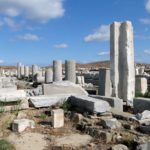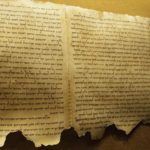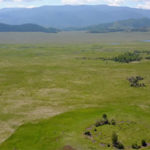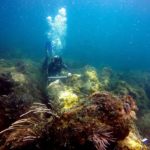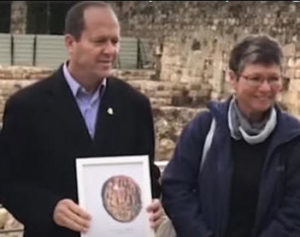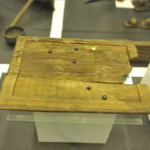 Slovakia has another unique archaeological object, an ancient game found in 2006 when researching the tomb of a Germanic prince in Poprad. After its conservation and further research, experts found the game has no parallel in Europe.
Slovakia has another unique archaeological object, an ancient game found in 2006 when researching the tomb of a Germanic prince in Poprad. After its conservation and further research, experts found the game has no parallel in Europe.
The game, over 1,600 years old, consists of chess-like squares with green and white playing pieces of different sizes that have also been preserved.
“There were plenty of board games in ancient times with many variants, but reconstructing the playing technique is a very complicated process that only top experts can solve,” said the deputy of director of the Archaeological Institute in Nitra, Karol Pieta, as cited by the SITA newswire. Pieta lead the research on the tomb in Poprad.
Expert from Switzerland
Archaeologists turned to the best European expert on ancient games, Ulrich Schädler, director of the Museum of Games located near Lake Geneva in Switzerland. He travelled to Slovakia and was excited about the finding.
“There has been not a playing board of similar type in Europe yet,” said Pieta for SITA. Games of this type were found in Greek and Roman temples on the floors or in the streets of ancient towns, carved into stone pavement. This portable wooden board game from Poprad is unique.
Schädler has a difficult task ahead of him – to try to solve the system of the ancient game. By the end of 2018 it should be placed in the exposition of findings from the tomb in the Podtatranské Museum in Poprad.
“The board game from the tomb of the German prince in Poprad is a great discovery and contribution to the history of games in Europe. It’s the best preserved ancient wooden board game that has been found to the north of the Mediterranean Sea. Together with Roman glass playing pieces it was apparently a prestigious object that documented contacts of the dead with the Roman world,” said Schädler, as quoted by SITA.
An analysis of the playing pieces revealed that it is ancient glass from the east Mediterranean, probably from Syria. “So the game was apparently brought from the territory of the Roman empire to under the Tatras,” added Pieta for SITA.
Roman army soldier
Experts succeeded in finding much information about the German prince during the research. Archaeologists now know that he was born in the area where he was also buried, he was about 30 years old and he stayed in the Mediterranean for some time.
“It’s highly probable that he served in the Roman army as a prominent officer that corresponded with his social status. He was strongly influenced by the developed ancient culture, as demonstrated by his favourite game being placed in his tomb,” said Pieta for SITA.
The tomb from the year 375 AD was discovered by accident while doing construction work twelve years ago in the industrial zone of Poprad – Matejovce. A bed from yew wood decorated with silver sheets and a desk belong among the most significant discoveries in the tomb.
Compiled by Spectator staff
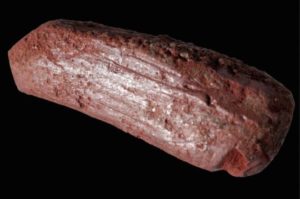 Archaeologists say they may have discovered one of the earliest examples of a ‘crayon’ — possibly used by our ancestors 10,000 years ago for applying colour to their animal skins or for artwork.
Archaeologists say they may have discovered one of the earliest examples of a ‘crayon’ — possibly used by our ancestors 10,000 years ago for applying colour to their animal skins or for artwork.
